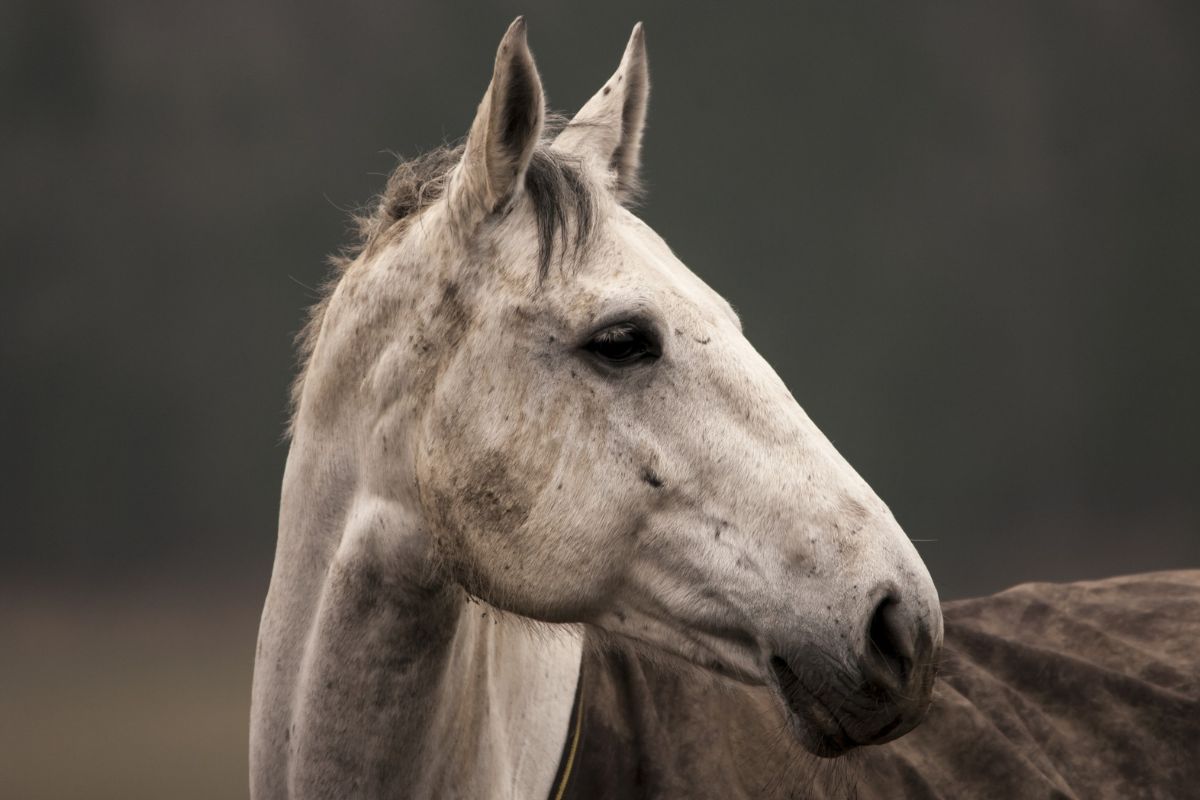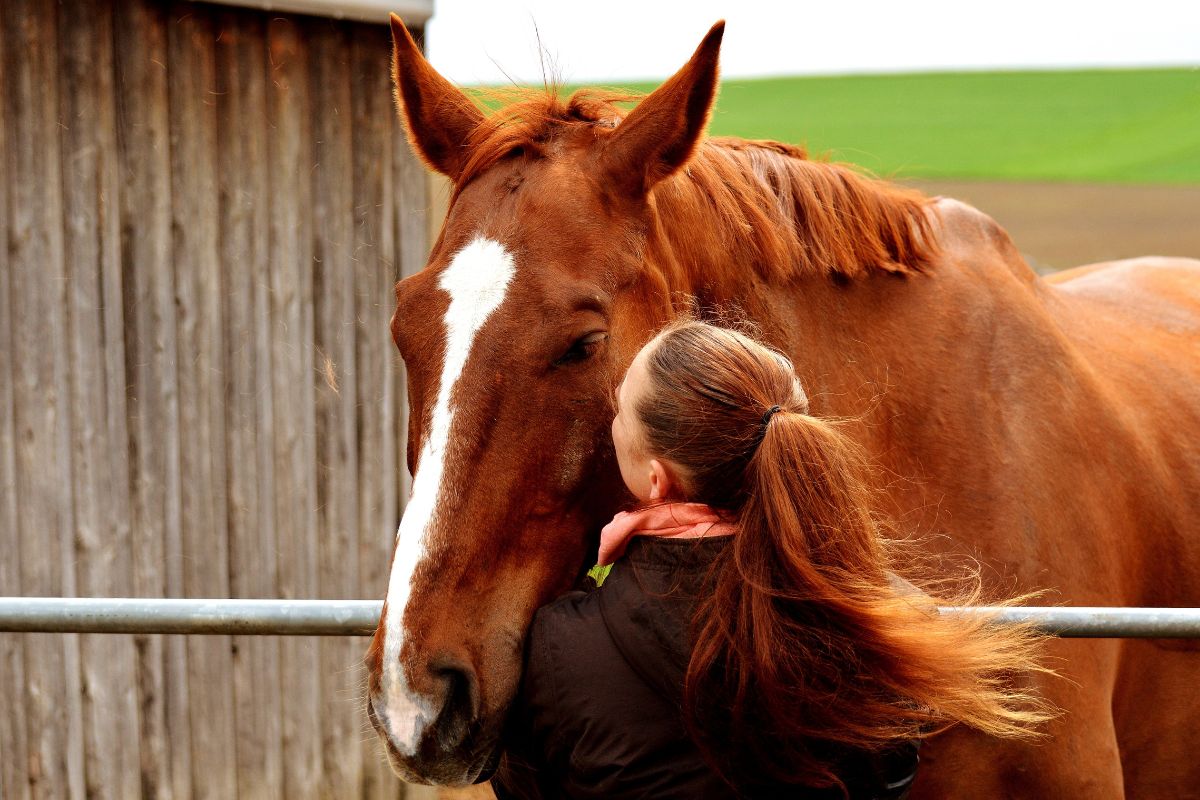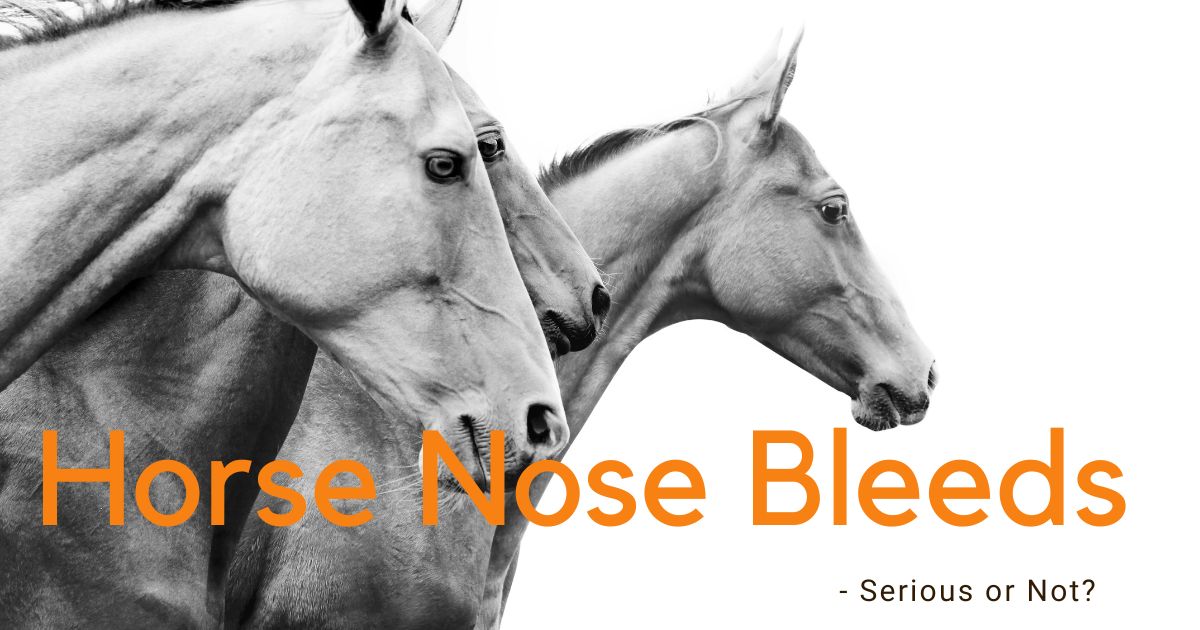A frequent cause for consultation with an equine veterinarian is horse nose bleeds. While seeing blood can cause concern for anyone, this condition occurs more often than you think! We’ll explain why.

Equines and Nose Bleeds
In medical terms, an equine nosebleed or “epistaxis” is bleeding from the nose. The bleeding may be minimal and stop a few minutes later or heavy and profuse. Epistaxis can occur for various reasons in the horse, and the blood can come from blood vessels in the upper or lower airway.
Are Horse Nose Bleeds Serious?
Nosebleeds can range from a trickle to a heavy spill. Although this condition may seem problematic, it is usually nothing serious and resolves on its own within 10 to 15 minutes.
Why is My Horse’s Nose Bleeding?
The most common cause of nose bleeds in horses is “exercise-induced pulmonary hemorrhage (EIPH).” It’s the lower respiratory tract that’s affected. The anatomical features of the lung make the horse susceptible to bleeding because the pulmonary capillaries are very weak. Elevated blood pressure levels (e.g., during intense work) rupture the capillaries and cause pulmonary hemorrhage. Blood pours into the pulmonary space through the nostrils.
Bleeding from the upper respiratory tract, which includes the inside of the nose up to the larynx, as well as the paranasal sinuses and guttural pouches, often occurs because this species has a large number of blood vessels in the mucosal lining of these structures, making them very susceptible to any irritation and inflammation with consequent bleeding.
What to Do if Your Horse Has a Nose Bleed
The first thing to do is stay calm and not panic. Do your best to keep the horse quiet, as excitement will raise blood pressure and cause more bleeding. Never plug its nose to stop bleeding; horses must breathe air through their nose, so they panic if it becomes blocked.
Apply cold compresses to the nose and wait 10 to 15 minutes.

Potential Causes of Equine Nose Bleeds
The reason for the bloody nose in horses has many different causes. To know if the problem is in the upper or lower airways, we must determine if the blood comes from one or both nostrils.
If the horse bleeds from both nostrils, the cause is usually a hemorrhage in the lower respiratory tract. That is, in the lungs. The pathology that usually produces this symptomatology is “exercise-induced pulmonary hemorrhage (EIPH).” EIPH refers to the presence of pulmonary-origin blood in the airways after the realization of strong physical effort, such as horse racing or any discipline in which the horse presents a heart rate greater than 240 beats per minute.
The vast majority of horses suffer bleeding in the lungs after strenuous exercise. But not all horses have nosebleeds. EIPH worsens as horses age and with chronic lung disease.
A horse nose bleed from one nostril may mean an upper airway, guttural pouch, or sinus hemorrhage. Possible causes are:
- Trauma to the head: A hard knock may cause a heavy nosebleed.
- Nasal foreign bodies: A foreign object may become trapped in the horse’s nose.
- Guttural pouch mycosis (fungal infection): The guttural pouches are an extension of the Eustachian air-filled tube connecting the throat to the middle ear. It is a structure present only in horses and a few other species. Fungal growth within the guttural pouch erodes essential nerves and blood vessels that pass through the network, for example, the internal carotid artery, which can then rupture and bleed, which is severe and can be fatal.
- Sinusitis: The paranasal sinuses are air-filled cavities in the bones of the skull (forehead, nose, maxilla, and orbit) lined by a respiratory epithelium that secretes a transparent and thin mucus that, thanks to cilia and the force of gravity, moves out into the nasal cavity of the horse and from there to the outside, performing a cleaning function of the nasal cavity and humidifying it so that it does not dry out during breathing. Sinusitis is the inflammation of the sinuses caused by viral, bacterial, and fungal infections.
- Ethmoidal hematomas: Consist of encapsulated, bleeding, and expansive masses that develop in the nasal ethmoidal labyrinth of the equine
- Bleeding polyp: This is a soft growth in the nostril
- Iatrogenic causes such as passing a stomach tube: Sometimes, when a veterinarian passes a tube through the nostrils, your horse may move, causing the tube to damage the delicate lining of the nostrils
Symptoms of Equine Nose Bleeds
Clinical signs may include:
- Blood from one or both of the nostrils
- Blood in a trickle
- Blood in a heavier flow
How Are Horse Nose Bleeds Diagnosed and Treated?
When a horse has a nosebleed, the diagnosis must determine the cause, as treatment will vary depending on the origin of the bleeding.
X-rays of the head and upper airway can provide helpful information. Yet, the diagnostic method of choice is endoscopy. A veterinarian performs this procedure which involves passing a long, thin camera called an endoscope through the nose into the back of the throat and then through the epiglottis into the trachea and lower airway. Endoscopy allows the veterinarian to visualize where the blood comes from and take samples if necessary.
Suppose the bleeding is due to a mycosis of the guttural pouches. In that case, it is crucial to identify it as soon as possible, as it can damage major blood vessels and lead to life-threatening arterial bleeding. Surgery is the treatment of choice. If the animal has lost significant blood, hospitalization may become necessary to stabilize the horse.
EIPH is a chronic problem that does not have a complete cure. Horse nose bleed aftermath is a drop in sporting performance, which varies depending on the level at which the horse competes and the degree of bleeding.
The preventive treatment used in this disease relies on a diuretic (Furosemide) which lowers blood pressure. There is ongoing research on other possible remedies to help equines with EIPH.
In bacterial infections, administer the antibiotic according to the culture and antibiogram results. Remove and perform histopathological study of benign growths or malignant tumors, as appropriate.
When to Call the Vet
Often, they are not a cause for concern, but they can also be severe. Since it can be challenging to know what is causing the nosebleed, an endoscopy is often required to confirm the diagnosis and the source of the bleeding. So, the suggestion is to contact your trusted veterinarian, whether a slight bleed, profuse, isolated, or constant bleed. After determining the diagnosis, the veterinarian can tell you about treatment options.
The Prognosis
Nasal bleeding in horses has an encouraging prognosis since, in most cases, it does not represent a danger to the animal’s life.
The only case that requires urgent attention is when the horse has nose bleeding due to mycosis in the guttural pouches because of the involvement of the internal carotid artery.
Whatever the cause, if the bleeding is intense to the point of compromising the animal’s health, the prognosis remains guarded until the patient becomes stabilized.

In Conclusion…
As a horse owner, seeing a horse with a bloody nose is alarming enough. But if this hemorrhage occurs several times on different occasions, it is pretty frightening.
Is it a serious condition or not? Any horse with a nosebleed requires diagnosis before assuming it is not severe.

